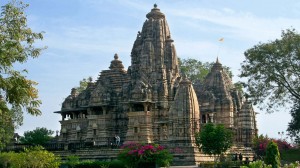Culture
With about 800 different languages and 18 officially recognized languages, several world religions, including Hinduism, Islam, Christianity, Jainism, Buddhism, Sikhism, Zoroastrianism and Judaism, various styles of art, architecture, literature, music and dance, and several lifestyles from the urban and rural to the tribal, India is a melting pot of cultural diversity.
Indian music spans various traditions, from folk songs and music which varies from region to region, tribal music, classical and semi-classical traditions and popular music. There are two recognized styles of classical music – the Hindustani (northern India) style and the Carnatic style of South India. Each also has its dedicated instruments – to name just a few, Hindustani music has the sitar, sarod, sur-bahaar, bansuri, shahnai and the violin while Carnatic musicians generally use the veena, venu, nadasvaram, gottuvadyam or the violin as the main melody instrument. Percussion and other accompanying instruments are equally varied. Vocal traditions in both classical styles are also different. Broadly speaking, Carnatic music is usually devotional in nature while the Hindustani style is secular. Apart from these traditions, there are various semi-classical styles (such as ghazals and qawwalis) and also a rich vein of popular music typified in songs from Indian films which are generally musicals.
Indian dance has an unbroken tradition of over 2000 years, with themes drawn from mythology, legends and classical literature. It also can be broadly divided into folk/tribal dances which have many regional variations, and the classical dances, which are based on ancient texts and have rigid rules of presentation. Some of the major classical dance traditions are Bharata Natyam, Kathak, Odissi, Manipuri, Kuchipudi, Mohiniattam and Kathakali.
Indian literature can date its origins to the oral tradition of the Vedas and the great epics of India, which are still an integral part of daily life. Poetry, drama, fiction, non-fiction and all other literary styles have a substantial corpus in each of India’s major languages and in quite a few dialects, while the oral tradition also continues through folk songs and plays. Theatre in India also has ancient historical roots, though classical theatre is performed very rarely nowadays, having been overtaken by a vibrant tradition of folk theatre (including puppet and shadow theatre) and modern professional theatre, which draws not only on stories written in various Indian languages, but also on non-Indian theatre from Shakespeare to Chekov to Andrew Lloyd Webber, either in English or in translation.
Indian art has its classical and folk traditions which are still vibrantly alive, and covers the gamut of genres from paintings to sculpture to handicrafts. Indian visual art has also been influenced by developments elsewhere in the world, and contemporary Indian art is steadily developing its own language in trying to interpret the Indian ethos in as many media as possible.
No overview of Indian culture can afford to ignore Indian cinema, with the first Indian movie having been made in 1912, the first talkie in 1931, and with the largest output of feature films in the world today, from pot-boilers to films which have attracted international acclaim. The advent of cable has given new life to television-oriented projects and soap operas, comedy serials and the like are rapidly adding to the many diverse facets of Indian culture.

